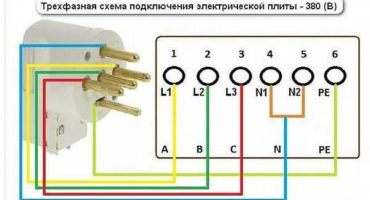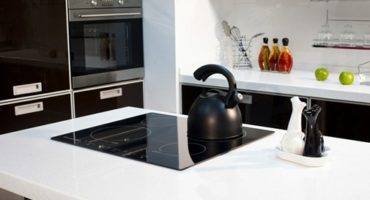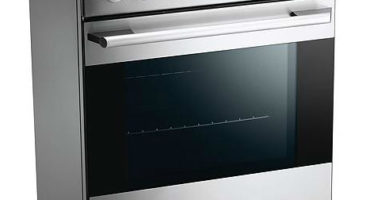The way of life is changing, technology is developing, which affects the desire to re-equip the kitchen space. For this reason, the role of the family hearth increasingly plays the role of glass ceramic plate, which has a lot of advantages compared to traditional gas devices:
- heats up quickly;
- fireproof;
- equipped with touch control device;
- has a concise design;
- easy to clean.
Before you go to the store for a new assistant, you should know that you need to be prepared for the fact that you will have to replace the kitchen utensils. And the point is not that the kitchen utensils are out of date, just some types of containers for cooking are not suitable for use on a glass ceramic panel.
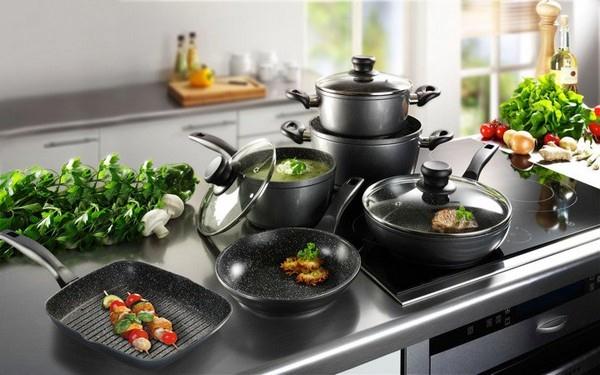
What utensils should not be used
Anticipating the tips, it is necessary to understand why in a dish having excellent characteristics and modern design, it is absolutely impossible to cook on a new electric stove. So, in what glassware it is impossible to cook on glass ceramics:
- Stewpots and pans made of soft metals (aluminum and copper) melt without special protection under the influence of high temperature. They not only spoil the exterior of the stove, but also affect the functional characteristics of the equipment.
- Equipment that has chips, damage, nicks at the bottom will cause irreparable damage to the equipment in the form of scratches on the coating.
- Dishes that do not have ferromagnetic properties will be useless on a stove working by the induction principle - the equipment will not turn on elementarily. List of materials that do not concentrate the magnetic field: brass, glass, ceramics, copper, aluminum. There are kitchen appliances made of steel, but non-magnetic alloys.
- Having a deformed curved bottom or prone to deformation under the influence of temperature conditions. During operation, the bottom does not lie on the burner - the cooking process is delayed, and the stove overheats. In addition to using energy inefficiently, expensive equipment can burn out.
- Small-sized cookware with a bottom diameter less than the diameter of the burner will also lead to heating to a critical temperature, which will result in negative changes.

Traces left by such dishes on a glossy plane cannot be eliminated.
What can be used
Despite many restrictions, choosing dishes for cooking on a glass ceramic stove is not so difficult and costly. An audit in the kitchen will make sure that many pots, ladles, pans, teapots and cast irons are suitable for a high-tech stove.
So, we select from the utensils (except for contraindicated) for the new glass-ceramic stove:
- A tank with a perfectly flat bottom will allow increased thermal conductivity due to its strong adhesion to the hob. The result will be a minimum cooking time, reduced energy consumption and increased life of the stove.
- Kitchen appliances with ferromagnetic properties. Checking their availability is simple - you need to use magnetized material: the magnet attracts the dishes - it is suitable for an induction surface.
- The bottom diameter should correspond to the diameter of the selected burner. It will be uncritical if it slightly exceeds its size.
Let's pay attention to the material from which the dishes for special plates should be made.
Steel stainless steel is an ideal choice in terms of practice and aesthetics. Cookware made of this material conducts heat well, so food is cooked in it at the lowest setting in a short time.
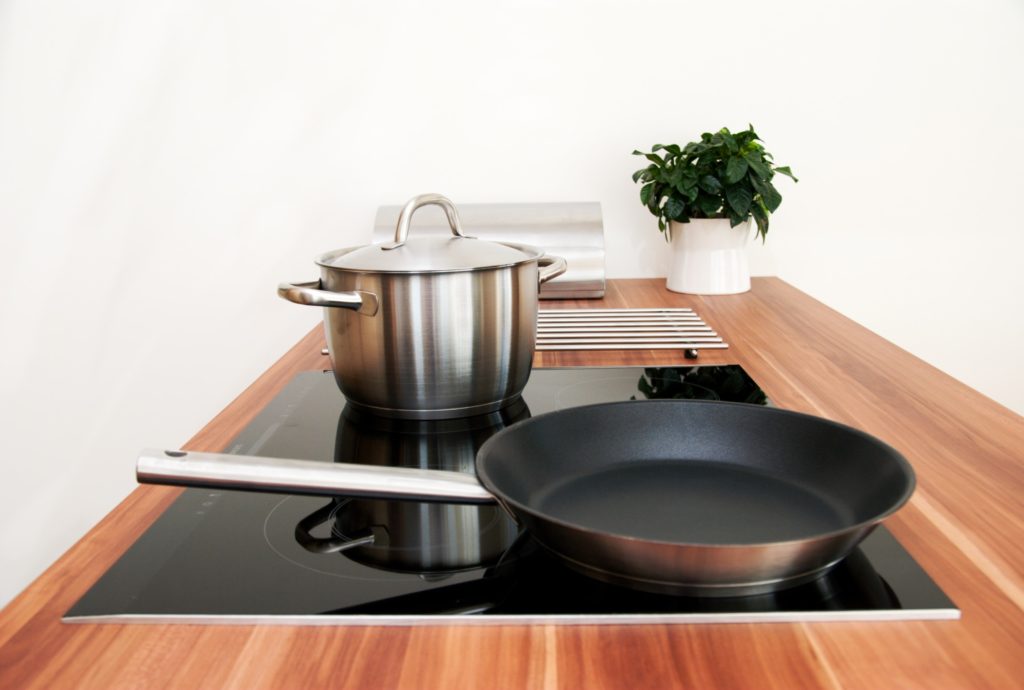
The design of shiny or brushed steel contrasts with dark glass-ceramic, creating a stylish look
Enameled utensils meet the requirements of glass ceramics. During the purchase and operation, you should pay attention to the inadmissibility of enamel chips.
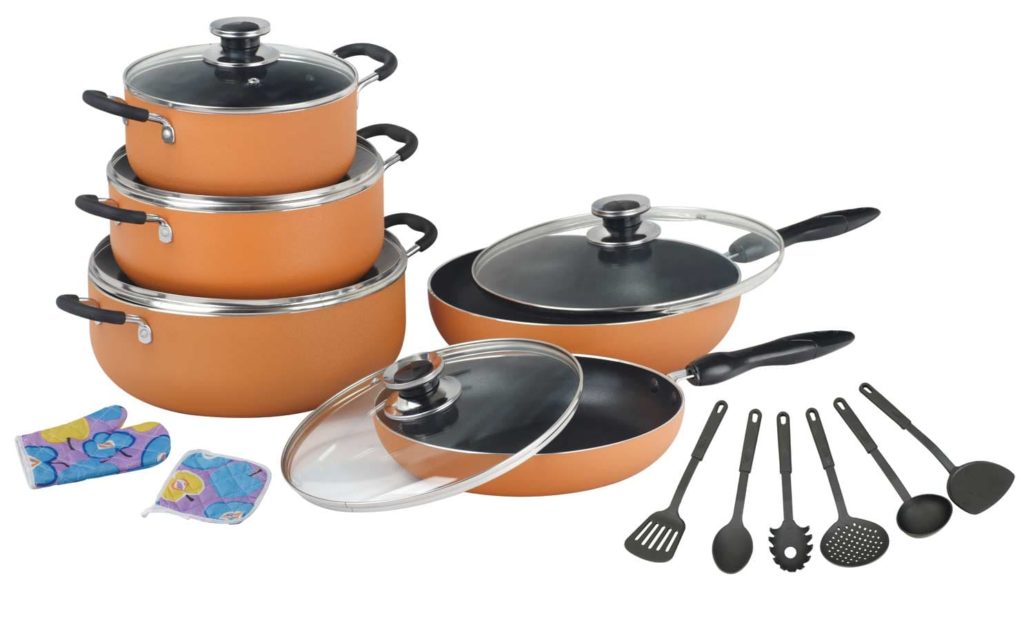
You can pick up a whole collection from this inexpensive material
Ceramic coated aluminum or Teflon treated. If there is a special designation on the bottom of aluminum dishes, you can safely use it, given that it has excellent heat-conducting properties.
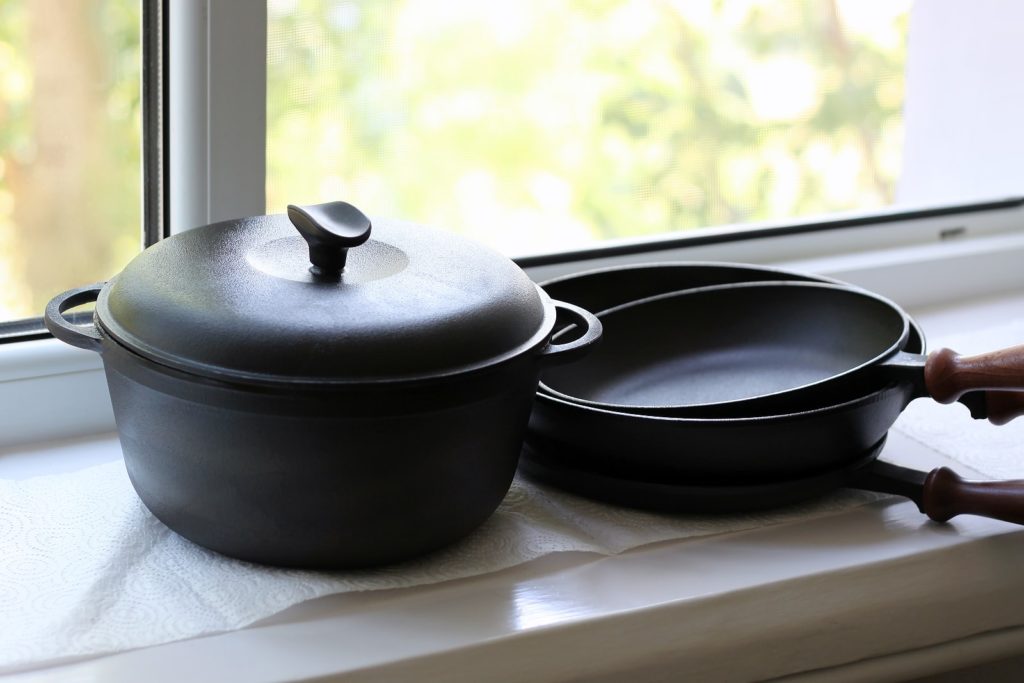
Thick-walled cast iron with a flat bottom can be used on newfangled cooking surfaces
Requirement for the parameters of the dishes:
- bottom thickness more than 7 mm;
- wall thickness more than 0.5 mm;
- tight fitting lid with steam outlet.
In the event that there is a need to replenish the stock of special dishes, the first thing you should pay attention to in the trading floor of the store is a special sign.

Marking is an indication that the dishes will not harm glass equipment
When developing cookware for glass-ceramic plates, manufacturers implement many modern engineering and technological solutions that allow not only optimizing the cooking process, but also increasing the level of work safety.
General information. Overview of 5 valid options
In order for the owner of the glass-ceramic plate not to be disappointed in his purchase, but to enjoy the taste of dishes, their quick preparation and low electricity consumption, you need to choose the right dishes: do not spare time and financial resources.
- A set of dishes made of aluminum with a thickened bottom covered with a special composition that will not allow overheating of fusible material.
- Steel or cast iron cookware with ceramic coating will allow you to forget about the burning of food.
- Cast iron cauldrons with a completely flat bottom will reduce the cooking time - the food will reach due to its own heat.
- Saucepan made of heat-resistant glass made using a special technology marked with marking. You will have to wait a little longer, but the stove will remain smooth and even for a long time.
- New dishes with concave bottom technology that disappears as soon as they heat up should ideally be used on a new stove.

